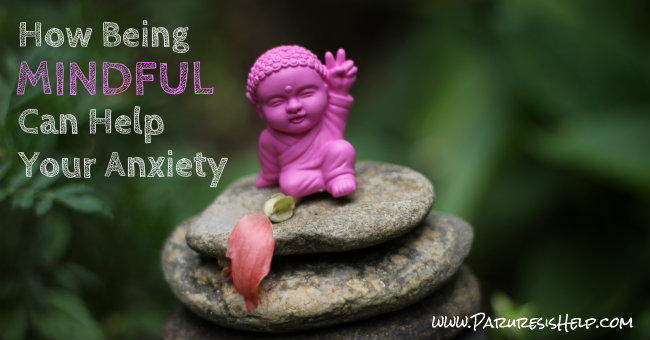
What is Mindfulness and MBSR?
Mindfulness finds it roots in Buddhist philosophy and meditation. The father of Buddhism, Siddhartha Gautama, established mindfulness as a constituent of the noble eightfold path, one of his most important teachings. Mindfulness, at its very core, is simply focusing on a single thing at a time. The concept refers to extended awareness of the mind that doesn’t seek to judge the items being contemplated. This moment-to-moment observation may extend to things like physical sensations, insights, emotional states, thoughts, and a whole host of other issues.
Mindfulness involves letting go of both the past and the future in order to concentrate on the things occurring in the immediate surroundings or within oneself. The aim of the practice is to achieve a state of mind where elements outside of the focal point being contemplated cease to matter completely. Since mindfulness relies on the ability to maintain focus on a single thing, eliminating distracting factors is vital in achieving meaningful sessions. This is usually done through isolating those partaking in the exercise in designated environments and focusing on breathing, listening to soothing music, or other such exercises.
Though mindfulness was inspired by Buddhist teachings, there isn’t anything fundamentally religious about the practice. In the late 70s, Dr. Jon Kabat-Zinn, a professor at the University of Massachusetts, attended a retreat where he was first introduced to mindfulness. The experience led him to believe the practice could be medically beneficial. As a result, Dr. Kabat-Zinn created a program designed around mindfulness that would go on to aid chronically sick patients coping with the pain and changes occurring in their lives. The practice pioneered by Dr. Kabat-Zinn has since spread through much of the Western world where it has become a staple among complement treatment for a wide range of alignments and conditions.
In the Western medical world, mindfulness is usually referred to as mindfulness-based stress reduction, or MBSR. This technique refines and applies mindfulness for therapeutic treatment purposes. This treatment is based around the calming effects of MBSR. Though Dr. Kabat-Zinn originally created his program to treat illnesses, MBSR can be used for an incredibly diverse range of things, the simplest of which is basic stress relief.
MBSR for Depression, Anxiety and Distress
There exists a wealth of documented proof that mindfulness-based treatment benefits people suffering from an exceeding array of conditions. MBSR is frequently subjected to meta-analysis, a type of study that looks at available research and forms evaluations and conclusions based on the findings of these studies. These analyses concerning MBSR and its usefulness in treating psychological conditions conclude that the usage of MBSR is beneficial for the management of depression, chronic pain, stress, anxiety, eating disorders, psoriasis, fibromyalgia, substance abuse, and cancer.
Despite of the wide range of applications for MBSR, the technique remains commonly used for alleviating depression, anxiety, and psychological distress. A meta-analytical study found that of these three, MBSR was most useful in treating psychological distress. Though less effective for those suffering from anxiety and depression, MBSR was still found to be beneficial.
MBSR has also been found to aid individuals suffering from substance abuse problems. A study published in the Journal of Cognitive Psychotherapy found mindfulness to be particularly useful in relapse prevention, a cornerstone in ensuring lasting benefits from substance abuse treatment. Another study published in The Journal of Alternative and Complementary Medicine found a link between MBSR and an increase in natural killer cells. This greatly benefitted the immune systems of the participants in the study.
Another thing to note about MBSR is that it is often paired up with other forms of treatment. Since MBSR often only takes a small window of time, it goes well as a compliment to other forms of treatment. Cognitive therapy is a common partner of MBSR. Together, they provide greater relief than when provided separately.
How can MBSR Help my Anxiety?
MBSR has an exceedingly long history of helping adults. Once individuals learn the vital concepts of mindfulness, such as remaining calm, being acutely aware, and focusing on a single issue, the benefits of MBSR are theirs for the taking. Since so many negative effects and alignments are linked to stress, possessing the capacity to quickly eliminate stress will likely reduce the risk of developing such chronic, stress related conditions as hypertension.
MBSR can help people achieve many things. Possibly the most important of these is basic stress relief. Though simply worrying about work may sound simple, those suffering from anxiety can get incredibly worked up over their performance and job security. This is especially true for high-achieving individuals that put pressure on themselves with elevated and often unrealistic expectations.
Trouble with coworkers or the boss can also have a deep impact on how appreciated and safe a person feels at work. Regular MBSR exercises can help alleviate much of this unwanted stress, and it can also help improve a person’s concentration.
Mindfulness also carries the benefit of allowing people to appreciate the moment-to-moment treasures of everyday life. Many adults have regrets about the past and worry about the future. Many are also prone to build lots of anxiety over negative instances. Let’s say an employee was chided by the boss at the weekly staff meeting. Next week, he or she may feel anxious about partaking in the meeting yet has no feasible way of avoiding it. MBSR can help place instances and worries such as these in the past and allow people to truly view only the present.
A Simple Take on MBSR
Concepts like focusing on oneself and trying to contemplate only a single item at a time can be demanding, especially for those with minds that tend to perpetually wander. Without proper guidance, it’s likely that some individuals would simply get distracted, bored, or annoyed and simply cease to focus on the therapy. These are important limitations that you must understand before attempting MBSR therapy. The concepts involved in MSBR aren’t too difficult to understand and most people can effectively practice the therapy with the right preparations. Not only are even the most distracted types able to eventually to partake in MBSR, but they end up actually enjoying it.
People can remind themselves that the negative emotions and physical symptoms that they are experiencing are the result of stress and anxiety. MBSR is something they can do to help themselves. An ideal way to begin is with trying the treatment for a week or two, even though it may seem strange or even useless at the onset. Once people get used to the practice and stick with the program they are very likely to experience less negative stress symptoms such as headaches and stomach pain.
It’s important you schedule MBSR sessions on a regular and consistent basis. You are more likely to stick with the therapy and make time to practice if you set aside a regular time on your schedule.
MBSR in Daily Life
Our daily lives impose all kinds of stressful things upon us. We must worry about our work, our children and pets, our homes, making payments, and whole host of other issues. This list seems to stretch on with no end in sight. Luckily, MBSR is rather easy to squeeze into an already hectic lifestyle with proper planning.
Once you begin to recognize what is prompting your highest levels of anxiety, you can time the frequency and hour of your MBSR sessions to suit your needs. For example, if it’s work-life that’s stressing you out, you may want to hold sessions during the evenings. This way, you will have had time to unwind at home and on your way to preparing for sleep.
Timing your sessions during the evenings will help you calm down and attain much needed, stress-free sleep. This will make the effects of the session extend well after you fall asleep and will help you face the troubles of tomorrow as they come. Most importantly, keep in mind your existing schedule. If you have to stress about making stress-relief sessions, chances are they won’t have much of an effect. Plan around events by prioritizing and know that missing a day of MBSR won’t collapse you to total anxiety.
MBSR sessions may go most smoothly if you engage in them in the quietest room in the house. Make sure the TV is turned off, the dryer in the next room isn’t banging, the door is closed, and that all possible sound is removed before your session. It’s also a good idea to remove yourself from areas where you are tempted by distractions. The phone, your to-do list, the radio or refrigerator may only serve to compete for your attention.
The ideal setting for MBSR sessions is a calm, non-threatening environment with all external distractions removed. This synergizes incredibly well with the focusing aspect of the therapy, as well as with the general idea of removing oneself from past regrets and worries about the future.
 This post was written by Clinical Psychologist Dr. Marie Cheour. Dr. Cheour has worked as a Professor of Psychology at the University of Miami where she received a 2002 Research Award, as a Professor of Neuropsychology at the University of Turko in Finland, and as the Head of the Developmental Brain Research Laboratory, Cognitive Brain Research Unit (CBRU), at the University of Helsinki.
This post was written by Clinical Psychologist Dr. Marie Cheour. Dr. Cheour has worked as a Professor of Psychology at the University of Miami where she received a 2002 Research Award, as a Professor of Neuropsychology at the University of Turko in Finland, and as the Head of the Developmental Brain Research Laboratory, Cognitive Brain Research Unit (CBRU), at the University of Helsinki.




